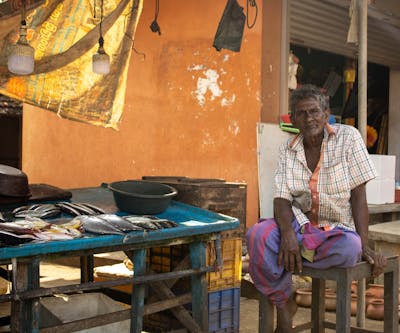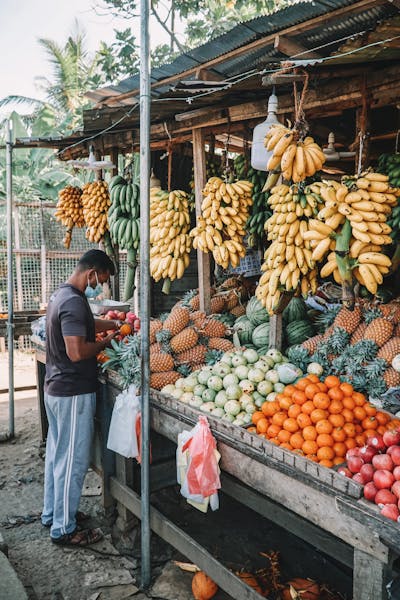Fostering Collaboration and Community Engagement in Sri Lanka: A Path to Sustainable Tourism Development

Introduction
Sri Lanka, with its rich cultural heritage, stunning landscapes, and warm hospitality, has emerged as a popular tourist destination in recent years. However, to ensure the long-term success of tourism and its positive impact on local communities, it is crucial to foster collaboration and community engagement. By involving locals in the tourism industry and promoting open-mindedness, Sri Lanka can create a sustainable tourism model that benefits both visitors and residents. This article explores the importance of collaboration and community engagement in Sri Lanka's tourism sector and highlights strategies to achieve this goal.
The Benefits of Collaboration and Community Engagement

-
Empowering Local Communities: Collaboration and community engagement empower local communities by involving them in decision-making processes and giving them a voice in tourism development. This fosters a sense of ownership and pride among residents, as they become active participants in shaping the future of their communities.
-
Preserving Cultural Heritage: Sri Lanka is renowned for its rich cultural heritage, including ancient temples, historical sites, and traditional arts. By involving local communities in tourism activities, there is a greater emphasis on preserving and showcasing this cultural heritage. Locals can act as ambassadors, sharing their knowledge and traditions with visitors, ensuring the authenticity and integrity of the cultural experience.
-
Economic Opportunities: Collaboration and community engagement in the tourism sector create economic opportunities for local communities. By involving locals in various tourism-related businesses, such as homestays, handicraft production, and tour guiding, income generation is distributed more evenly, benefiting a broader segment of the population.
-
Enhancing Visitor Experience: When locals are actively engaged in the tourism industry, visitors have the opportunity to interact with them on a deeper level. This interaction enhances the visitor experience, as they gain insights into the local way of life, customs, and traditions. It also promotes cultural exchange and understanding, contributing to a more meaningful and authentic travel experience.
Strategies for Fostering Collaboration and Community Engagement

-
Education and Awareness: To foster collaboration and community engagement, it is essential to educate locals about the benefits of tourism and its potential impact on their communities. This can be done through workshops, training programs, and awareness campaigns that highlight the importance of sustainable tourism practices and the value of community involvement.
-
Capacity Building: Providing training and capacity-building programs to local communities equips them with the necessary skills and knowledge to actively participate in the tourism industry. This includes training in customer service, language proficiency, entrepreneurship, and sustainable tourism practices. By enhancing their capabilities, locals can offer high-quality services and experiences to visitors.
-
Partnerships with Local Organizations: Collaborating with local organizations, such as community-based tourism initiatives, non-profit organizations, and cultural associations, can help bridge the gap between the tourism industry and local communities. These partnerships can facilitate the involvement of locals in tourism activities, promote cultural preservation, and ensure that the benefits of tourism are shared equitably.
-
Inclusive Decision-Making: Involving local communities in decision-making processes related to tourism development is crucial. This can be achieved through community consultations, public forums, and the establishment of local tourism committees. By including locals in the planning and decision-making stages, their perspectives and concerns can be addressed, leading to more sustainable and community-driven tourism development.
-
Promoting Cultural Exchange: Encouraging cultural exchange between visitors and locals is an effective way to foster collaboration and community engagement. This can be done through cultural events, festivals, and interactive experiences that allow visitors to immerse themselves in the local culture and traditions. By facilitating these interactions, stereotypes can be broken, and a deeper understanding and appreciation of each other's cultures can be fostered.

Conclusion
Fostering collaboration and community engagement in Sri Lanka's tourism sector is essential for creating a sustainable model that benefits both visitors and locals. By empowering local communities, preserving cultural heritage, creating economic opportunities, and enhancing the visitor experience, Sri Lanka can develop a tourism industry that is inclusive, authentic, and mutually beneficial. Through education, capacity building, partnerships, inclusive decision-making, and cultural exchange, the tourism industry can be transformed into a catalyst for positive change and sustainable development in Sri Lanka. By embracing collaboration and community engagement, Sri Lanka can showcase its true beauty while ensuring the well-being and prosperity of its people.
Experience the intersection of creativity and civic vision with Flomo Notio. Collaborating with architects, consultants, and experts, we're reshaping destinations for public and government sectors. Discover how we're shaping tomorrow's experiences at www.flomonotio.com/destinationdevelopment.
